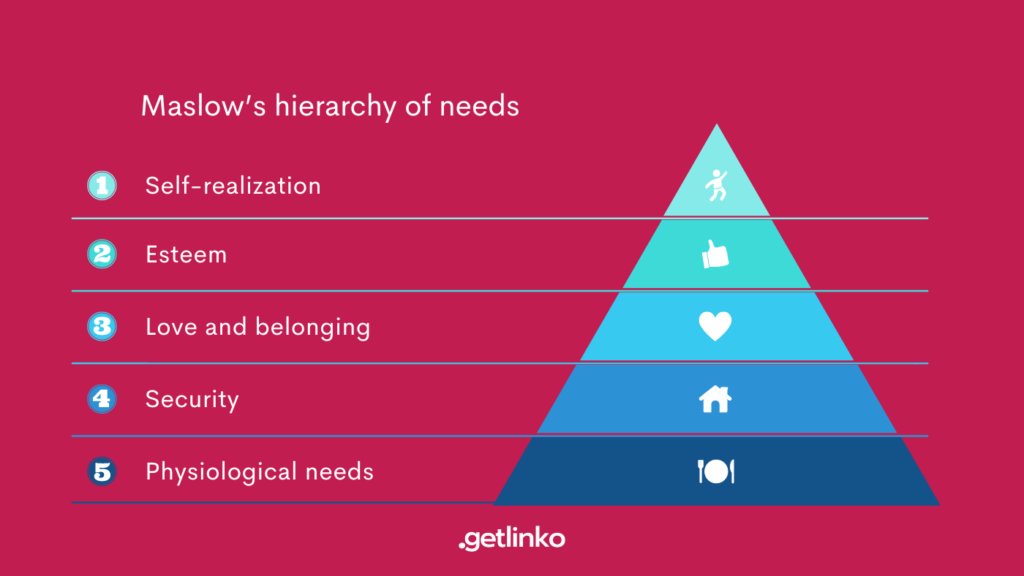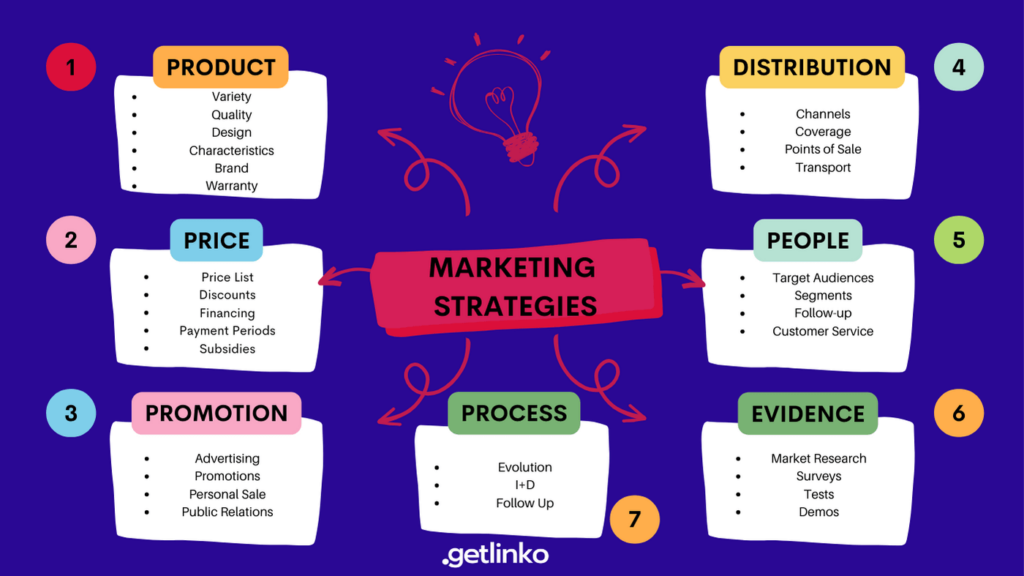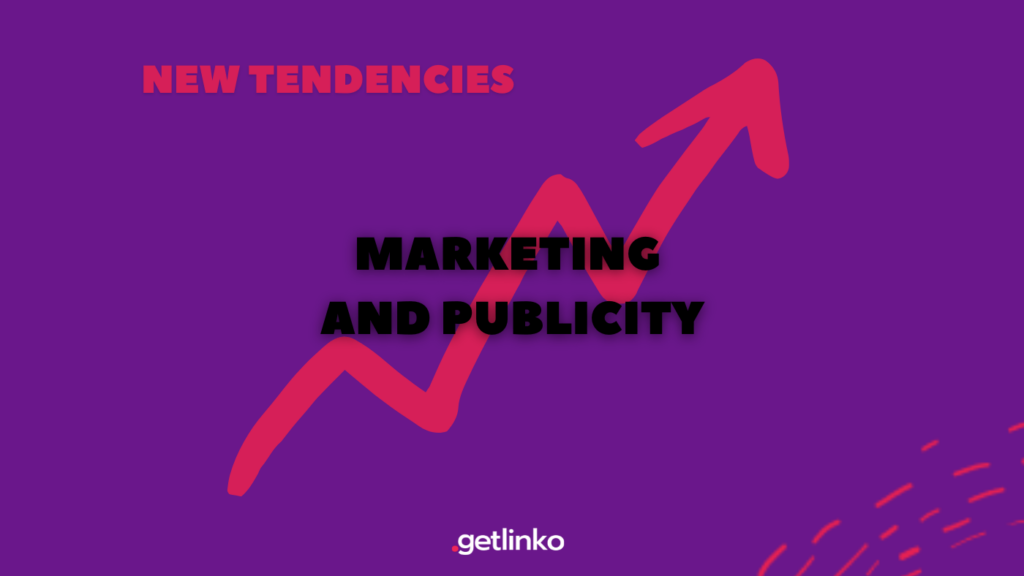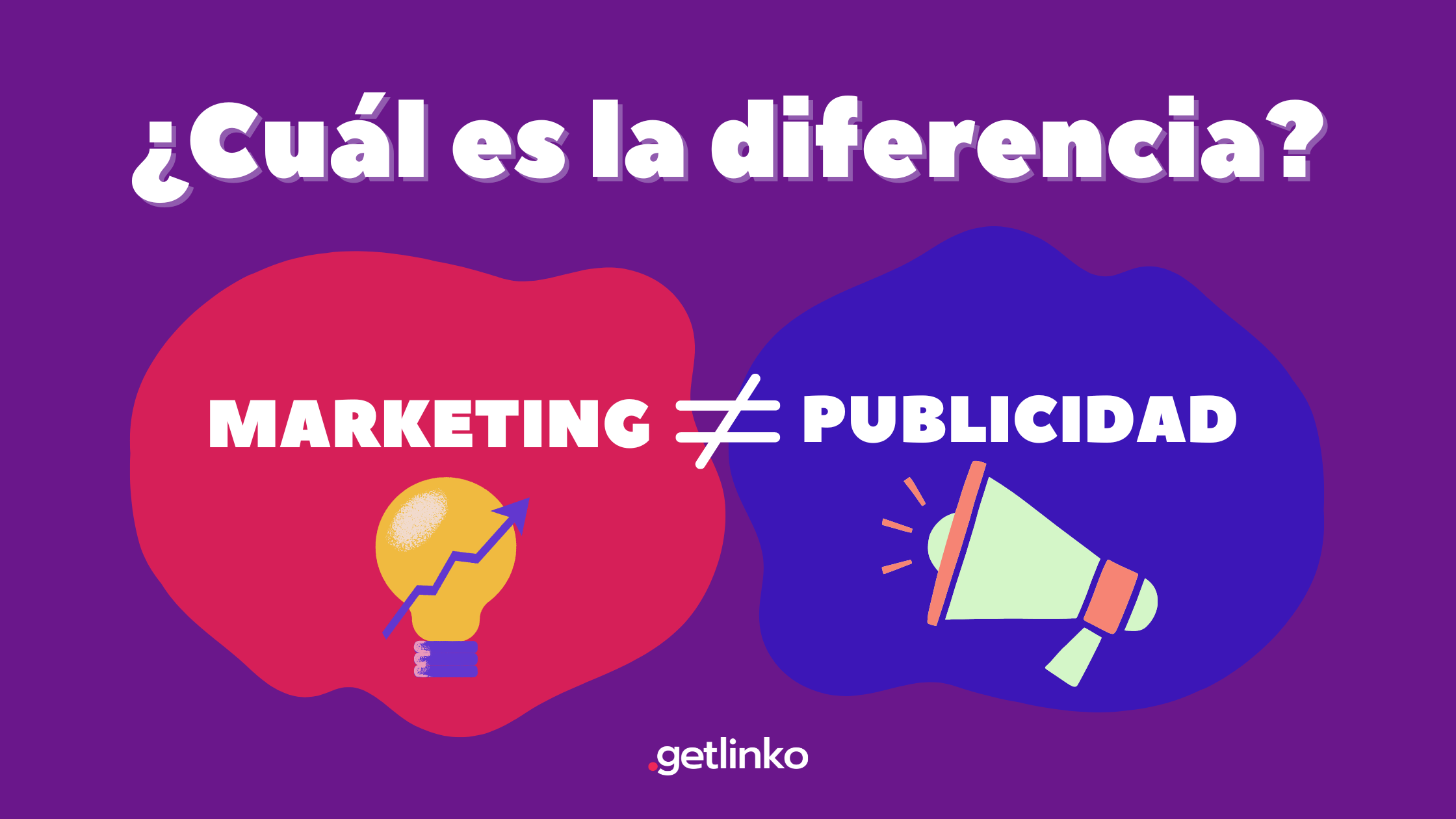These two terms often cause confusion among users. Marketing and advertising go hand in hand, but that does not mean that they are the same since there are numerous differences and a hierarchy between them within the professional and work environment. That’s why, in this article, we will explain the difference between marketing and advertising.
To begin, we will present the definitions, characteristics, and relevant concepts of each term. It’s important that you understand each term, and we aim to make it as simple as possible.
What is Marketing?
«“Marketing is the social and managerial process by which individuals and groups obtain what they need and want through the creation, offering, and free exchange of valuable products and services with others” Philip Kotler.
“Marketing is the identification, anticipation and satisfaction of customer needs” Peter Drucker
Here are some of the most iconic definitions of marketing. Both Philip Klother and Peter Drucker, respectively, come to say that marketing is a set of strategies used to obtain the final goal of satisfying the customer, generating value and profitability.
In addition, it is based on the famous 4Ps of the marketing mix, which are the following:
- Product: The product or service offered by the company.
- Price: The price to pay for that product.
- Promotion: The way in which the company makes itself known.
- Place: The point of sale of the product.
These concepts evolve and adapt over time, so these 4Ps of the marketing mix have increased as the demand of the markets is greater than ever. Today, the current marketing mix is based around 7Ps, including the following:
- People: Segments into which the target audience is divided.
- Physical evidence: Pre- and post-product launch investigations.
- Process: Development of the product in the market after it is launched.
Key Marketing Concepts
The 7Ps of marketing mix do not have to have common strategies; there are many ways to increase the notoriety or potential of each of them. These strategies are called marketing strategies. In addition to the above, marketing pursues a wide variety of objectives, applying these strategies in a very diverse way, and here we will show you what they are.

In this image, you can see Maslow’s famous hierarchy of needs. Marketing is obliged to be able to recognize and satisfy each of the steps of the pyramid, from the simplest to the most complex. This pyramid can also be staggered into needs, desires, and demands.
Needs are basic states that need to be met, such as food, rest, etc. Desires are how that need is satisfied, and depending on where you are located, they can be satisfied in one way or another. Finally, when a desire is achievable, thanks to the resources we have, it becomes a demand. Consumers see products as benefits and will choose the one they consider best based on the money they want to spend. Given their desires and resources, people will choose the products that provide them with the most satisfaction.
In order to attain this, marketing creates the so-called “Value Proposition” through which extra value is added to the product. Companies meet needs through value propositions. This proposal is satisfied by a marketing offer: a combination of physical product, services, information or experiences. These experiences do not imply owning something tangible, but they are an inseparable part, along with the tangible product, of the marketing offer.
Marketing Strategies
It cannot be said that there are a specific number of strategies; they are innumerable. Each company has a different point of view on how to approach their business strategy, but what we can do through the following image is to summarize how the different types of strategy are divided according to the marketing concept you want to promote.

Here, you begin to understand a little what the difference between marketing and advertising is, but before that, we want to ensure that each of the actions that appear there responds to marketing strategies, whose purpose is to enhance the P of the marketing mix to which they belong. Each company decides how to act according to the resources, needs, and objectives at its disposal. Raising or lowering the price, selecting the store location, and developing research on the market, competition, and prospects are marketing strategies. In short, many of your company’s day-to-day actions, even if you don’t know it, should respond to a previously established marketing strategy.
What is advertising?
We will now explain what advertising is and how to approach it. Advertising is the set of techniques used by companies for the creation of signed messages and their dissemination through mass media, the purpose of which is to influence the perception and free behavior of a target audience and to favor the interests of those companies or institutions. Advertising is part of the marketing mix: Promotion.
Advertising is constantly evolving and only makes sense in a social context, in which the individual has freedom of choice between different options (buying, behavioral, voting, etc). In addition, culture and economy are directly related to advertising, awakening objective needs (food, security, etc.), and subjective needs (traveling, having fun, differentiating oneself).
The main characteristic of the consumer society is individual consumption, so the function of advertising is to influence consumers’ decisions in the market. Advertising reaches people through advertising campaigns, and we’re going to explain how they develop.
How Advertising Campaigns Work
The way advertising manifests itself is through advertising campaigns. These respond to a strategy based on the union of ideas and needs of advertisers and advertising agencies. Below, we will explain the steps to carry out an advertising campaign.
The first step must be taken by the advertiser, clearly explaining to the agency what the marketing problem is. This occurs through a briefing in which the advertiser presents a summary of the context in which the company is and what it considers to be the problem that the agency must solve. Subsequently, the agency analyzes the information received and adapts its contents to what they consider appropriate. This response is called a counter briefing. The contents of this counter-briefing stand out for the presence of a SWOT analysis (weaknesses, threats, strengths, opportunities) and the pertinent modification of concepts that the agency has made based on the first briefing delivered by the advertiser.
In the second step, the agency sets out to develop not just one but several creative proposals to solve the initial problem posed by the advertiser. Several are created because they will later be exposed to the advertiser, and he will decide which of them he wants to be carried out. In addition, each of these proposals must be focused on the already promoted value proposition, with which to generate a state of differentiation of the brand with respect to the competition.
The third step is simple. The agency offers the results of its work with previous exposures of its campaigns, and the advertiser chooses which of them comes to light. These meetings usually generate a conflict of interest since the advertiser always wants to adapt everything to their thoughts, since they believe they are always right since they are the ones paying, while the agency is reluctant to change.
The fourth and final step is the execution of the project, this time in its entirety and publicly.
Difference Between Marketing and Advertising
Having said all this, let’s explain the difference between marketing and advertising. Marketing is the set of strategies carried out to increase a company’s sales, create a value proposition, and meet the needs of customers, while advertising is one of those strategies that marketing uses to achieve its objectives.
Advertising is not synonymous with marketing. Marketing is the total marketing strategy, and advertising is a part of that strategy.
If we understood both concepts based on a hierarchy, we would say that marketing is above advertising and that advertising is a marketing method to obtain specific objectives. While marketing works to enhance the 7Ps of the marketing mix, advertising is integrated into one of them: promotion, whose intention is to publicize a brand or product and increase its notoriety.
Example of the difference between Marketing and Advertising
Understanding the difference between marketing and advertising is much easier through examples. We will show you a brand and how it uses marketing and advertising for various situations. Red Bull is a very recurrent example since they have very clear strategies. These strategies vary since each of them responds to meet the objectives established for each of the Ps of the marketing mix already mentioned. For example, they have a marketing strategy around a target audience: active people, who like to do sports, break the rules and always give the best of their body and mind.
On the other hand, the advertising carried out by Red Bull are its mythical advertisements in the form of cartoons with its slogan, “Red Bull gives you wings.” This perfectly defines the difference between marketing and advertising since marketing is a set of strategies from the product with its packaging, brand positioning, price, and distribution, while advertising is part of the communication strategy.

Advertising & Digital Marketing
In the same way, these concepts are applicable to the digital sector, where the difference between marketing and advertising is the same, but these strategies are adapted to the medium and audience in which they are going to be launched.
Digital advertising refers to all forms of advertising that occur in the online environment, including social media ads, banners on websites, search engine search ads, email, and video advertising on platforms such as YouTube, IG, etc. In general, digital advertising is characterized by its ability to segment users based on their interests, behaviors, and preferences, allowing you to effectively reach those interested in the product or service offered.
On the other hand, digital marketing is a set of broader strategies that include advertising and other aspects such as SEO, email marketing, UX user experience, Branded Content, brand and price positioning, differential, the product or service itself, the value proposition, and web analytics. The goal of digital marketing is to generate a closer relationship with the target audience based on the knowledge of their needs, preferences, and behaviors, using measurable data to offer more effective and personalized solutions.
Marketing and Advertising are constantly evolving
It is important to understand that both marketing and advertising are constantly evolving. They change as society changes, so their development is not so simple or summarized. The way in which messages are transmitted, the way we act according to certain contexts, and people’s tastes are not the same now as they were 50 years ago, and 50 years ago, both marketing and advertising already existed.
As we have mentioned, this change goes hand in hand with the evolution of society, so these business models are greatly influenced by the era in which they are developed, the attitudes and tastes of their audiences, and the way of thinking of their filmmakers.
Branded content in Marketing and Advertising
At Getlinko, we have mentioned in several articles what branded content is all about, and it is a term that you should keep in mind when understanding the difference between marketing and advertising.
Branded content is a digital marketing strategy that seeks to create quality content that is also subtly linked to a specific brand or product. Branded content does not focus on selling directly but on generating a user experience through content. In this way, the objective is to create an emotional bond between the brand and the target audience; it is more than just a company that aims to sell to a customer, but has much more to offer.
Are you clear about the difference between marketing and advertising?
Getlinko’s blog offers you countless digital marketing articles through which you can continue to increase your digital knowledge. The final summary is that marketing encompasses a large number of strategies, while advertising is a strategy used by marketing to enhance a specific sector of the company.
Every company, whether you know it or not, is structured around marketing policies that help direct the day-to-day running of the company, while advertising can be understood as a means through which to increase the notoriety of a brand or product.
We hope we helped you! Follow us on social media and visit our website.


